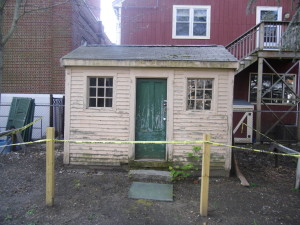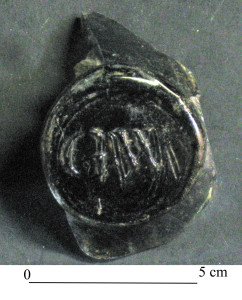 This little shed-like building was recorded in the 1970s as being a slave house associated with the estate of George Watson, a Tory and the richest man in Plymouth in the 18th century. Recently, interest was generated in restoring the building and making it a museum to Plymouth’s forgotten slave population. As part of the restoration work, an archaeological survey was conducted beneath and around the building. Extensive evidence of Native American occupation (this was Squanto’s village of Pawtuxet) and ca. 1630s European occupation (this was one of the first streets laid out in town and the site of European farming and occupation since 1623) as well as lots of 18th and 19th century artifacts related to the Watson
This little shed-like building was recorded in the 1970s as being a slave house associated with the estate of George Watson, a Tory and the richest man in Plymouth in the 18th century. Recently, interest was generated in restoring the building and making it a museum to Plymouth’s forgotten slave population. As part of the restoration work, an archaeological survey was conducted beneath and around the building. Extensive evidence of Native American occupation (this was Squanto’s village of Pawtuxet) and ca. 1630s European occupation (this was one of the first streets laid out in town and the site of European farming and occupation since 1623) as well as lots of 18th and 19th century artifacts related to the Watson
and later the Jackson families (the Jacksons introduced bananas to Plymouth in this very yard) but no evidence was found to prove this was a slave house. Quite to the contrary, a lot of evidence was amassed to show that earlier interpretations of slave and early post-slavery architecture and material culture (as defined by Dr. James Deetz at the Parting Ways site) were just plain wrong. What we found was the earliest evidence of 17th century Plymouth identified in modern times and a site that shows that even though the site of the first settlement and its immediate environs have been heavily developed, areas still maintain a high degree of archaeological potential.
Download the report here
